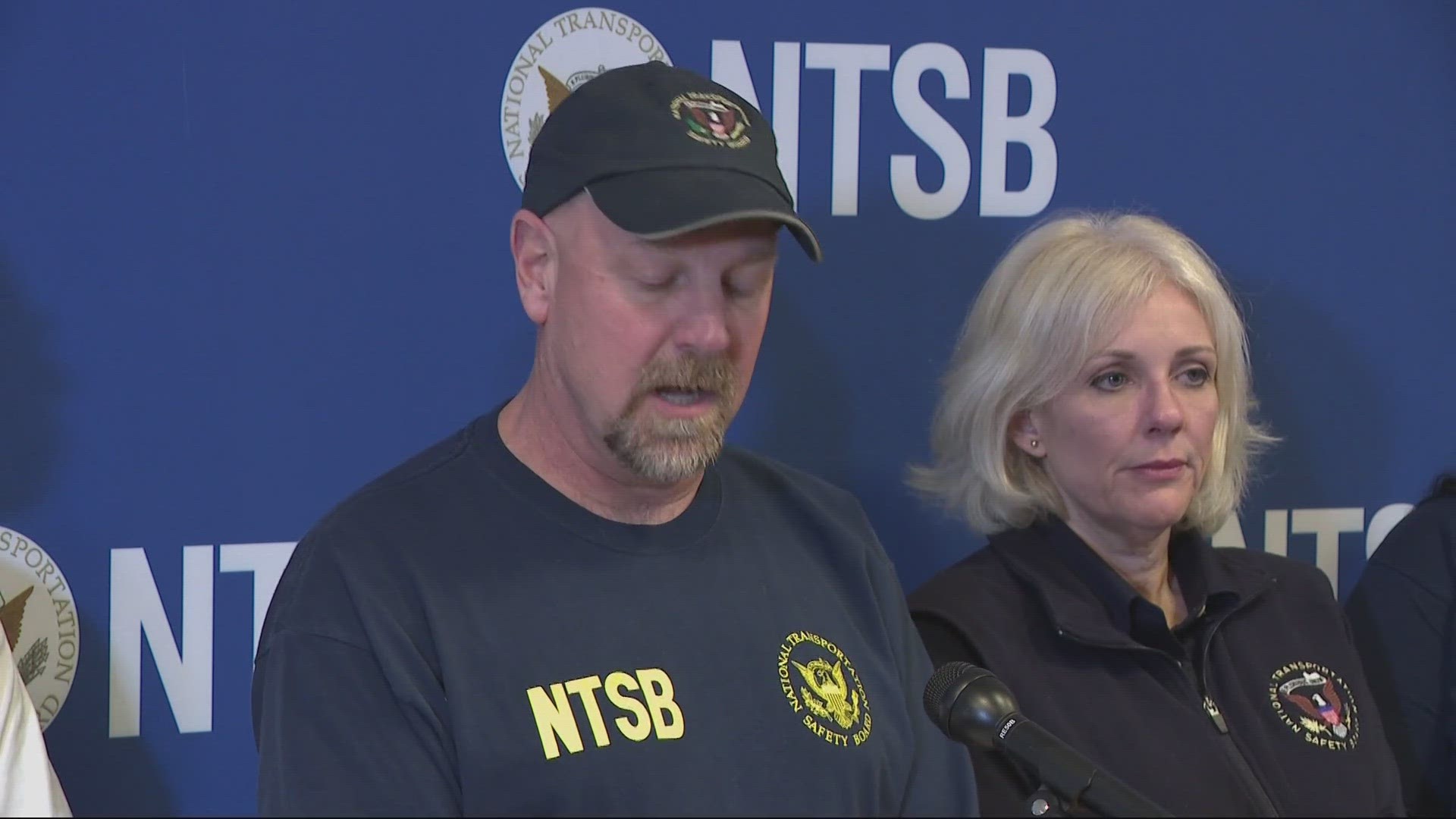PORTLAND, Ore. — The door plug that blew out of a Boeing 737 MAX 9 during an Alaska Airlines flight on Jan. 5 slid upwards off its hinges, two on each side, and blew out of the fuselage, federal investigators said during a news conference Monday night. Officials also said they haven't found the four bolts that restrict vertical movement of the door plug and are unsure at this point if they were even there in the first place.
The door plug was retrieved by National Transportation Safety Board (NTSB) investigators Monday morning in the Cedar Mill area from the backyard of Portland science teacher Bob Sauer. NTSB officials said investigators found that both guide tracks on the plug were fractured.
"We found that both guide tracks on the plug were fractured," said Clint Crookshanks, an NTSB aerospace engineer. "We have not yet recovered the four bolts that restrain it from its vertical movement and we have not yet determined if they existed there. That will be determined when we take the plug to our lab in Washington D.C."
The uncertainty of whether the bolts were ever there, and the fact that both Alaska and United Airlines are finding that some bolts weren't tightened in their own inspections of other Boeing MAX 9s, has raised further concern.
"Right now we are focused on the evidence. The evidence tells a story. The components on this door plug tell a story. We have to follow the evidence and see where it takes us," said NTSB Chair Jennifer Homendy.
The door plug will be transported to NTSB's lab in Washington D.C. Officials said the full investigation results could take a year to 18 months to complete.
RELATED: United Airlines found loose bolts, other issues on a key part of grounded Boeing 737 Max 9 jetliners
During Monday's press conference, the NTSB also addressed concerns regarding the decompression lights coming on in the plane in three of its other recent flights. NTSB officials said those warning lights were unrelated to this event.
Homendy started the news conference reading off a summary of events from the flight data recorder, which included the following details (all times PST):
- 5:06:47 — Aircraft departs runway 28 left at PDX
- 5:12:33 — Recorded cabin pressure drops from 14.09 to 11.64 pounds per square inch when the aircraft was at approximately 14,830 feet and 271 knots.
- 5:12:34 — Master caution, which is a warning system, activates. Cabin pressure drops to 9.08 psi.
- 5:13:41 — Aircraft continues to climb and reaches a maximum altitude at 16,320 feet and begins to descend. The air speed was 276 knots.
- 5:13:56 — Selected altitude changes from 23,000 feet to 10,000 feet
- 5:16:56 — Aircraft begins a left turn from 121 degrees. The altitude was approximately 10, 120 feet.
- 5:17:00 — Aircraft descends below 10,000 feet
- 5:18:05 — Aircraft altitude was approximately 9,050 feet, the airspeed was 271 knots.
- 5:26:46 — Aircraft lands on runway 28 left at PDX
Homendy said the NTSB survival factors team interviewed two flight attendants they had not yet talked with. The team found both interviews to be consistent with the interviews of the other two flight attendants. Homendy also said they reported there were significant flight crew communication challenges during the event.
Download the KGW News app: Download for iPhone here | Download for Android here
Stream newscasts for free on KGW+ on Roku, Amazon Fire and Apple TV: How to add app to your device here
See a typo in this article? Email web@kgw.com for corrections.

